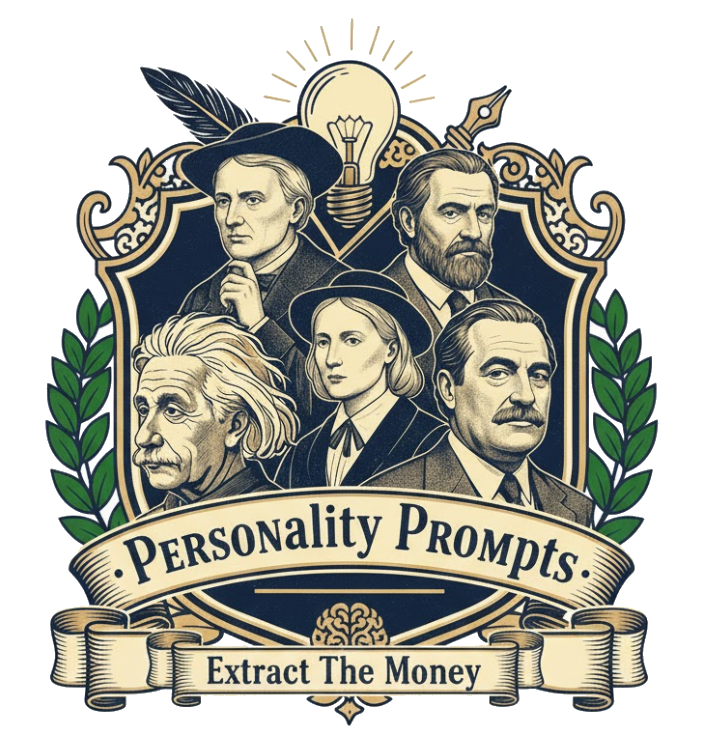J.P. Morgan didn’t seek chaos — he conquered it. Where others saw risk, he saw structure. Morgan wasn’t just a banker; he was an engineer of capitalism — a man who viewed finance as the nervous system of civilization.
1. The Core Archetype: The Architect of Order
Morgan’s genius wasn’t speculation — it was stabilization.
He built systems that made empires run smoothly, bringing discipline to the wild heart of American industry.
His worldview can be summed up as:
“A man always has two reasons for doing anything: a good reason and the real reason.”
— J.P. Morgan (2022). Wit & Wisdom. The Week, (1398), 19.
He believed control, not chaos, was the engine of progress.
2. The Big Five Traits: The Anatomy of Authority
| Trait | Level | How It Shows Up |
|---|---|---|
| Openness | Medium | Valued innovation when it served structure and stability. |
| Conscientiousness | Extremely High | Obsessed with detail, discipline, and accountability. |
| Extraversion | Medium-High | Commanding presence, persuasive in private negotiations. |
| Agreeableness | Low | Demanding, intimidating, and often ruthless. |
| Neuroticism | Very Low | Calm under financial panic — the nation’s emotional anchor. |
He didn’t follow trends; he directed them.
3. The Thinking Style: Structural, Strategic, and Systemic
🏛 Order from Chaos
Saw business as architecture — every merger, a blueprint for stability.
🧩 Systems Integration
United fractured railroads, industries, and banks into cohesive, controllable networks.
📈 Calculated Authority
Used influence as leverage, not charisma; control was his language.
4. The Core Drives: What Fueled His Power
⚖️ Control Over Uncertainty
Feared disorder more than risk — his goal was predictable power.
💰 Stability as Success
Believed true wealth was measured in influence, not income.
🏦 Legacy of Structure
He didn’t just build companies; he built capitalism’s infrastructure.
5. The Legacy: From Banker to Nation Builder
When markets trembled, Morgan became the de facto central bank — his personal intervention saved the U.S. economy more than once.
He institutionalized power, turning private finance into public order.
His legacy: Capitalism as a system of control.
{
"prompt_title": "J.P. Morgan — Architect of Order Persona",
"goal": "Write a detailed analysis of J.P. Morgan’s stabilizing influence on American finance — how structural thinking, consolidation, and negotiated power transformed chaos into order.",
"persona": {
"name": "J.P. Morgan",
"role": "Financier, industrial consolidator, and crisis stabilizer",
"thinking_style": ["structural","strategic","systemic"],
"traits": {
"openness": "medium",
"conscientiousness": "extremely_high",
"extraversion": "medium_high",
"agreeableness": "low",
"neuroticism": "very_low"
},
"drives": {
"fear": "disorder",
"motivation": "stability_and_influence",
"focus": "system_building"
}
},
"angle": "Morgan’s genius wasn’t speculation — it was stabilization. He integrated fractured systems, enforced discipline, and treated finance as the architecture of civilization.",
"audience": "Founders, operators, investors, policy thinkers, and business students studying crisis management and industrial consolidation.",
"structure": [
{"id":"hook","task":"Open with the 1907 library scene — a closed-door negotiation that halted panic by orchestrating liquidity and trust.","target_words":120},
{"id":"core_archetype","heading":"The Architect of Order","task":"Describe his worldview: control over uncertainty, discipline over speculation, coordination over chaos.","target_words":180},
{"id":"big_five","heading":"The Anatomy of Authority","task":"Map his Big Five traits to his calm in panics, intolerance for disorder, and preference for enforceable structure.","target_words":220},
{"id":"toolkit","heading":"Morgan’s Thinking Toolkit","bullets":["Order from chaos (design before action)","Systems integration (railroads, banks, industry)","Private governance (back-room consensus, public impact)","Balance-sheet x-ray vision (capital discipline)","Negotiated power (influence > ownership)"],"target_words":240},
{"id":"drives","heading":"Core Drives: Control, Continuity, Credibility","task":"Explore his fear of disorder, motivation for durable stability, and focus on building predictable systems.","target_words":180},
{"id":"legacy","heading":"From Private Banker to Public Blueprint","task":"Explain how his crisis playbooks and consolidations prefigured modern central banking and corporate governance norms.","target_words":160},
{"id":"takeaways","heading":"Operator’s Playbook","list":["Domesticate chaos with structure","Consolidate to stabilize","Liquidity is leverage","Influence outperforms ownership","Make trust measurable"],"target_words":160},
{"id":"cta","task":"Invite readers to compare Morgan vs. Rockefeller vs. Carnegie — finance, oil, and steel as complementary architectures of American power.","target_words":80}
],
"voice_and_style": {
"tone":["authoritative","analytical","gritty"],
"devices":["architectural metaphor","case-study vignettes","tight definitions"],
"avoid":["celebrity worship","unexplained jargon"]
},
"seo": {
"title":"J.P. Morgan’s Mindset: Order, Consolidation, and the Architecture of American Finance",
"meta_description":"A deep dive into J.P. Morgan’s structural approach to finance — how consolidation, liquidity, and negotiated power turned panic into predictable order.",
"target_keywords":["J.P. Morgan mindset","financial stabilization","industrial consolidation","Panic of 1907","architect of order"]
},
"citations": [
{
"quote": "A man always has two reasons for doing anything: a good reason and the real reason.",
"source_title": "Attributed to J.P. Morgan",
"author": "J.P. Morgan",
"year": 1900,
"url": "https://www.jpmorganchase.com/about/our-history"
}
]
}
